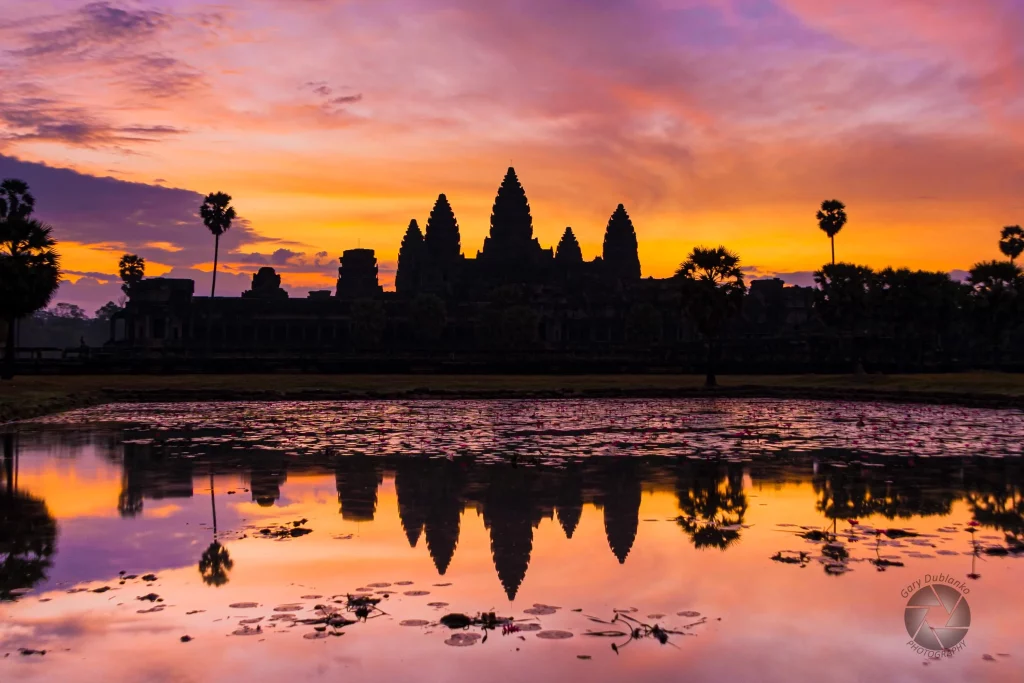The temples of Cambodia and Myanmar stand as monumental testaments to the regions’ ancient civilizations, spiritual beliefs, and architectural brilliance. These awe-inspiring structures have captured the imagination of travelers, historians, and spiritual seekers alike for centuries. From the sprawling Angkor Wat in Cambodia to the mystical temples of Bagan in Myanmar, these sites represent the pinnacle of religious architecture and cultural heritage in Southeast Asia. But what makes them so unique on the world map? Let’s explore the historical and cultural significance of these temples and why they are must-visit destinations for travelers.
Introduction: Exploring the Historical and Cultural Significance of Temples in Cambodia and Myanmar
Cambodia and Myanmar, two countries steeped in centuries of religious and cultural history, boast some of the most impressive temple complexes in the world. Temples are not just architectural feats but also symbols of faith, cultural identity, and national pride. The temples of Cambodia and Myanmar are woven into the very fabric of the countries’ histories, offering visitors a glimpse into the spiritual heart of Southeast Asia.
For centuries, these temples have served as places of worship, meditation, and community. The intricate carvings, soaring spires, and massive stone structures are not merely physical structures but are imbued with the values, beliefs, and practices of the civilizations that built them. For travelers, these temples provide an opportunity to connect with the past, reflect on the power of human ingenuity, and explore the spiritual practices that have endured through the ages.
In this article, we’ll take a closer look at two of Southeast Asia’s most iconic temple sites: Angkor Wat in Cambodia and the temples of Bagan in Myanmar. These monumental complexes are not just UNESCO World Heritage sites but also powerful symbols of the regions’ rich religious and cultural traditions.
Angkor Wat’s Magnificence: Why Angkor Wat is Considered One of the World’s Greatest Monuments
Angkor Wat is undoubtedly one of the most famous and revered temple complexes in the world. Located in Cambodia, this 12th-century wonder is the largest religious monument ever built and the jewel of the Khmer Empire. It stands as a testament to both the architectural mastery and the spiritual depth of the Khmer civilization. Angkor Wat was originally constructed as a Hindu temple dedicated to the god Vishnu, but over time it gradually transitioned into a Buddhist temple, reflecting the religious evolution of the region.
A Monument of Grandeur
The sheer scale of Angkor Wat is overwhelming. Covering an area of over 162 hectares (400 acres), the temple complex is designed in the shape of a giant mandala, with its five central towers symbolizing the peaks of Mount Meru, the sacred center of the universe in Hindu and Buddhist cosmology. The temple is built with sandstone and is adorned with intricately detailed carvings that tell stories from Hindu mythology, including scenes from the Ramayana and Mahabharata. The walls of Angkor Wat are adorned with massive bas-reliefs that stretch for over 800 meters, depicting everything from battle scenes to celestial dancers.
The temple’s layout is an architectural marvel in itself. It is designed with a high level of precision, reflecting the knowledge of astronomy, mathematics, and religious symbolism that the Khmer civilization possessed. The temple’s alignment with the sun is also significant: the central tower rises to its highest point at sunrise on the spring equinox, symbolizing the connection between the divine and the earthly.
Spiritual and Cultural Significance
Angkor Wat’s significance goes beyond its architectural brilliance. It is a deeply spiritual place that has long been a center of worship and reflection. Today, it remains an active Buddhist temple, attracting thousands of pilgrims and visitors from around the world. Its influence on Cambodian identity cannot be overstated—Angkor Wat appears on the national flag, and its image is used to represent the country’s rich heritage and cultural pride.
The temple is also a symbol of Cambodia’s resilience. Despite the devastation of the Khmer Rouge regime in the late 20th century, Angkor Wat stood as a beacon of hope and cultural preservation. Its role as both a tourist attraction and a spiritual center continues to draw people from all walks of life, offering a sense of connection to the past while also inspiring the future.
Myanmar’s Temples: Uncovering the Hidden Treasures of Bagan and Other Temples in Myanmar
While Cambodia’s Angkor Wat is the undisputed jewel of Southeast Asia, Myanmar also boasts some of the most breathtaking and awe-inspiring temples on the continent. The temples of Bagan, a vast archaeological site in central Myanmar, are often considered one of the world’s greatest religious landmarks. With thousands of temples, stupas, and pagodas scattered across a 40-square-kilometer plain, Bagan offers a striking contrast to the grand scale of Angkor Wat, yet it is equally impressive in its own right.
Bagan: The Ancient Kingdom of Temples
Bagan was the capital of the Pagan Kingdom from the 9th to the 13th century and is home to over 2,000 temples and stupas, many of which are still standing today. The temples of Bagan vary in size and style, ranging from towering pagodas to smaller, intricately decorated shrines. The Ananda Temple, Shwezigon Pagoda, and Thatbyinnyu Temple are some of the most iconic structures in Bagan, showcasing a blend of Burmese, Indian, and Sri Lankan architectural influences.
The temples of Bagan were built during a period of intense religious and cultural expansion in Myanmar. Buddhism was the dominant religion, and the kings of the Pagan Kingdom commissioned the construction of temples to honor the Buddha and promote spiritual devotion. Many of the temples in Bagan are adorned with stunning murals, frescoes, and statues of the Buddha, offering a glimpse into the artistic and religious practices of the time.
What sets Bagan apart from other temple complexes is the sheer number of temples spread across the landscape. A hot-air balloon ride over Bagan at sunrise offers one of the most magical views you’ll ever experience: a sea of temples, pagodas, and stupas rising from the mist, with the Irrawaddy River winding through the distance. The tranquility and serenity of Bagan make it a place of reflection and spiritual renewal, drawing visitors from around the world to witness its majesty.
Other Temples in Myanmar: Exploring the Mystical Sites
Beyond Bagan, Myanmar is home to numerous other remarkable temples and pagodas. The Shwedagon Pagoda in Yangon is one of the most iconic religious sites in Southeast Asia, revered for its golden stupa that shines brightly under the sun. This sacred site is a focal point of Myanmar’s Buddhist culture and serves as a major pilgrimage destination for Burmese Buddhists.
In the ancient city of Mrauk U, located in the Rakhine State, visitors can explore a lesser-known temple complex that offers a unique blend of historical significance and architectural beauty. The temples of Mrauk U, with their distinctive architecture and remote location, provide a quiet and peaceful alternative to the more crowded tourist sites.

Travel Tips: Best Times to Visit, What to See, and How to Experience These Awe-Inspiring Temples
Visiting the temples of Cambodia and Myanmar requires thoughtful planning to ensure that you experience these awe-inspiring sites at their best. Here are some travel tips for getting the most out of your visit.
Best Time to Visit
Both Cambodia and Myanmar have tropical climates, with distinct wet and dry seasons. The best time to visit is during the dry season, which runs from November to February. During this period, the weather is cooler and more comfortable for exploring temples and other outdoor attractions. Avoid visiting during the rainy season (June to October), as heavy rainfall can make travel more challenging and hinder sightseeing.
What to See
- Angkor Wat: Besides the main temple, don’t miss the surrounding temples in the Angkor Archaeological Park, such as Bayon Temple, Ta Prohm, and Angkor Thom.
- Bagan: In addition to the iconic temples like Ananda and Thatbyinnyu, be sure to explore some of the lesser-known temples to escape the crowds and experience Bagan’s tranquil beauty.
How to Experience These Temples
- Angkor Wat: Visit during sunrise for the most breathtaking view of the temple’s reflection in the surrounding moat. Hiring a local guide can enrich your experience with historical insights.
- Bagan: Take a sunrise or sunset hot-air balloon ride to see the temples from above, or explore on foot or by bike to immerse yourself in the landscape.
Conclusion
The temples of Cambodia and Myanmar are not just architectural wonders—they are living symbols of the spiritual and cultural heritage of Southeast Asia. Angkor Wat and the temples of Bagan continue to stand as testaments to the creativity, devotion, and ingenuity of the civilizations that built them. Whether you’re drawn to the grandeur of Angkor Wat or the mystical beauty of Bagan, these temple complexes offer a unique opportunity to connect with history and spirituality. With careful planning and an open mind, a journey through these sacred sites will leave you with a deeper understanding of the region’s rich cultural tapestry and the timeless legacy of its people.





















